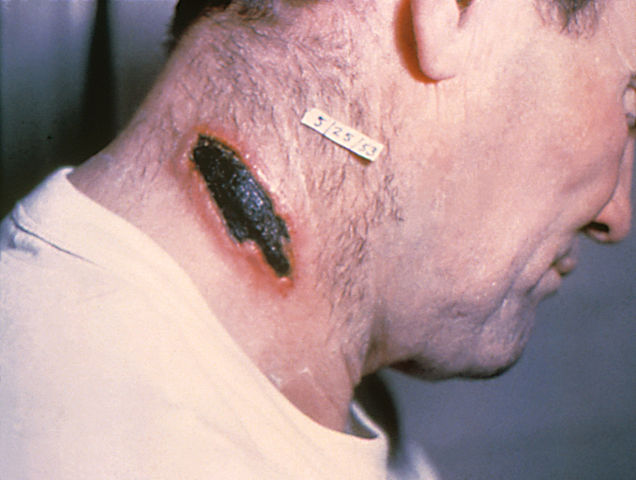I’m entering a few months prep for the UK and Ireland exit exam in Emergency Medicine: the FRCEM. I’ll be adding lots of little notes on pearls I’ve learned along the way. A lot of my revision is based around the Handbook of EM as a curriculum guide and review of contemporary, mainly UK guidelines. I also focus on the areas that I’m a bit sketchy on. With that in mind I hope they’re useful.
You can find more things on the FRCEM on this site here.
What is anthrax and how do you manage it?
(From OHEM and Green book)
- bacillus anthracis
- usually found in grass eating animals (hence the leather industry exposure) but also big in IDU population in recent years. Also famously posted all around the US
- causes mainly skin disease in humans but also GI and respiratory
- usually <48 hrs incubation
- Cutaneous anthrax
- usually painless
- red papule developing into an ulcer
- septicaemia in 20%
- Inhalational anthrax
- flu like illness
- cyanosis
- sub cutaneous oedema
- mediastinal widening from lymph nodes
- of note person to person airborne transmission does not occur
- Management
- cipro, penicillin, clindamycin (in combination)
- green book recommends giving the vaccine in addition to treatment
[collapse]
Describe some potential bioterrorChemical agents
- Organophosphates
- hold on we covered that one…
- and more recently we looked at it again…
- Chlorine
- lacrimation, conjunctivitis, coughing and wheezing
- if severe laryngeal and pulm oedema
- if severe can give steroids
- Cyanide
- yes done that a little here
- and a little here
- CS Gas
- blepharospasm, lacrimation, coughing
- resolves in 10 mins of fresh air (with the conjunctivitis a little longer)
- keep them in a well ventilated space
- blowing air on the eyes can help vaporise remaining CS
[collapse]
How would you decontaminate a patient
(From OHEM and Rich Carden’s excellent piece on St Emlyns)
- should be decontaminated at scene
- protect yourself
- may have to give antidote while doing decontamination (eg atropine in organophosphate)
- removing clothing removes most of the contamination. And cut it rather than pull it over the head
- clean with warm/tepid water
[collapse]

